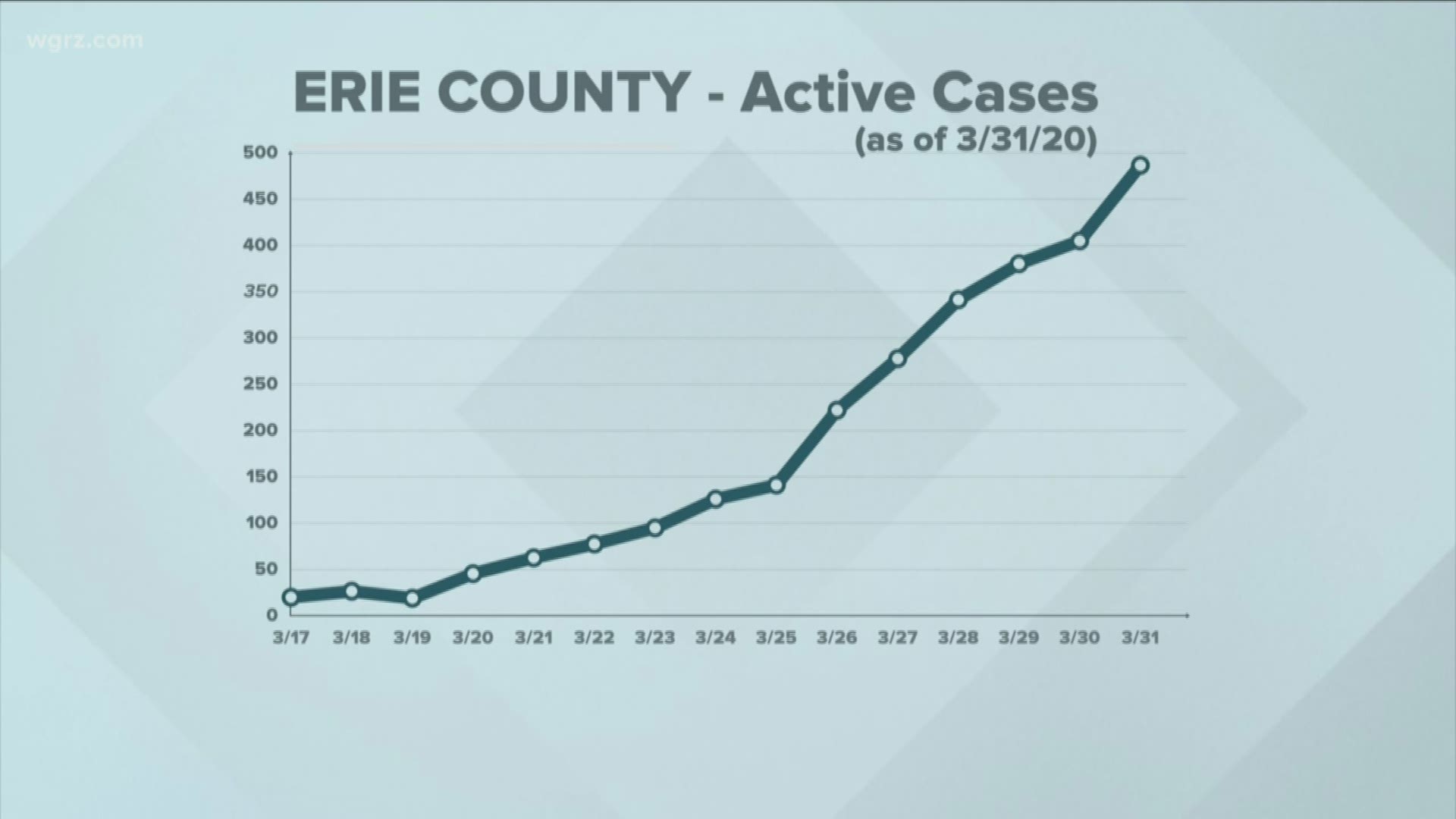BUFFALO, N.Y. — As the number of coronavirus cases rises in Erie County, we wanted to check to see where that means we are on the curve.
2 On Your Side's Kelly Dudzik spoke with one of Western New York's leading experts on infectious disease Tuesday to find out.
Dr. Thomas Russo is the chief of infectious disease at the University at Buffalo. He says looking at these numbers, it's critically important for you to take the public health measures that have been suggested, such as social distancing, more seriously than ever.
As the number of cases increases, he says the likelihood that you will get infected increases and the likelihood you'll infect someone else also goes up.
We also know a lot of people who are sick haven't been able to get tested.
"How does the lack of testing impact the numbers that we're seeing? Because we know there are more cases out there than what the numbers are showing," Dudzik said.
"Yeah, absolutely. I'm sure that we have at least tenfold more cases than we've been able to diagnose. As you know, we're reserving cases (testing) for those individuals that most critically ill and present to hospital. So, if you extrapolate that we probably have at least 5,000 cases in western New York, and perhaps even more with this concept of a lot of individuals are asymptomatic," Dr. Russo said.
While the numbers in Erie County have been increasing daily, Dr. Russo says we probably have at least 5,000 cases in Western New York since a lot of people don't show any symptoms and not everyone's getting tested.
Dr. Russo says if you just look at the absolute numbers, it's a bit discouraging. But we've been on track where the cases have been doubling every three days in Erie County and he says that could be changing in a positive way.
"We'll just going to have to see over the next few days where we may be sort of shifting to more doubling of cases, that'd be three and a half to four days. However, as the cases increase, when you have a doubling time, even though it's only three to four days, with large number of cases, you get a, you know, almost a disconcerting increase of cases. It's, it's unsettling, but this is the natural history and the curves that we expect when you have outbreaks like this," Dr. Russo said.
"The numbers don't surprise me at all. I think the curve is following what would be predicted. And, as I mentioned earlier, there's a glimmer of hope that we may be flattening the curve."
That could all change if people don't practice social distancing.
"It's going to increase the height or the magnitude of that peak. And, though we know most people do very well with the new coronavirus infection, there's a small but significant population that become critically ill and need healthcare resources. And, if too many people get infected too quickly, we're going to overwhelm those healthcare resources. And, we won't be able to take care of them optimally. And, as a result, there'll be increased morbidity and mortality," Dr. Russo said.
Dr. Russo says we haven't hit the peak here yet. He says that could be two or three weeks away.

